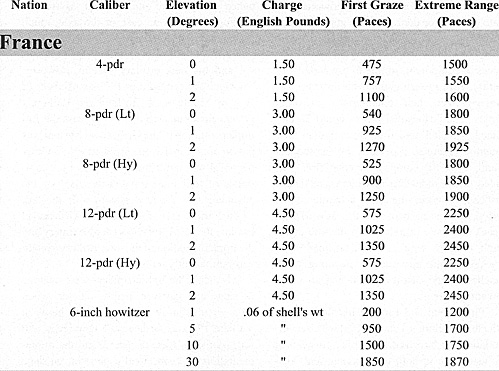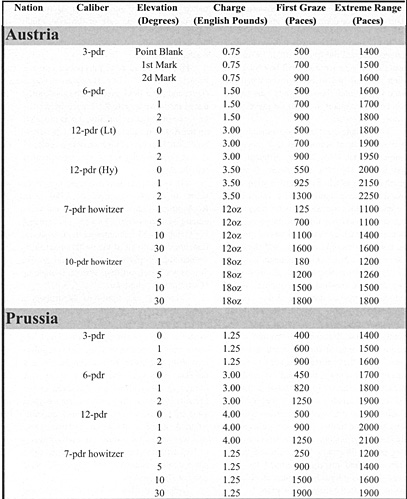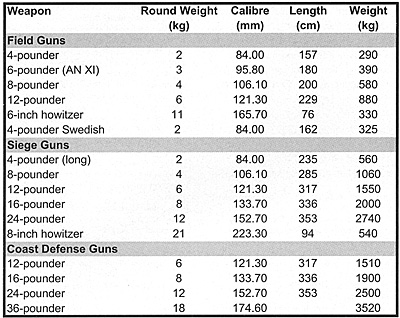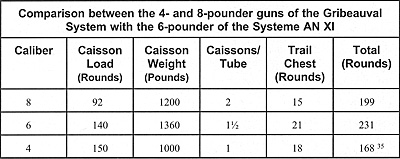The Cannon’s Breath
Napoleon's Ascension
by Kevin Kiley, USA
| |
After Napoleon’s accession to power in late 1799, the artillery and engineer schools would come to his attention and re-established to their former excellence after the tumultuous years of the Revolution. Napoleon considered education the cornerstone of the artillery and engineers and was in line with both Valliere and Gribeauval on that subject. He believed the best generals came out of the artillery. There were two areas not addressed by Gribeauval in his artillery reforms-horse artillery and the artillery train. When asked why he didn’t organise a horse artillery arm when he was organising the artillery arm into permanent companies and regiments, he replied, ‘You witness the difficulties and enemies which my endeavours to destroy ancient prejudices have raised against me; at a future period we may execute your plan; digest and improve upon it; for the present it would be asking too much.’ When war came in 1792, horse artillery was almost immediately organised and it proved to be an elite arm of the service. The British horse artillery of the period, which enjoyed both a high reputations and a high degree of professional skill, considered their French counterparts to be superior to them. The problem of a militarised artillery train was solved by First Consul Bonaparte by a decree of January 1800, when artillery train battalions were organised, and companies of artillery were ‘brigaded’ with train companies that would provide troops and horse teams to pull the guns and ancillary vehicles. The following table compares the firing characteristics of the artillery weapons of France, Austria, and Prussia after the adoption of the Gribeauval System. The information is taken from Adye’s Bombardier and Pocket Gunner.
Artillery doctrine was also taken into consideration in Gribeauval’s reforms to go along with the other Reformers in the French service who greatly desired to improve the French army’s rather poor performance in the Seven Years War. Tactics were changing, and the artillery doctrine of the French army changed with it. Infantry/Artillery co-ordination was taught in the artillery schools, and Jean du Teil’s De l’Usage de l’Artillerie Nouvelle dans la Guerre de Campagne codified those changes. It is the only artillery arm of the time that actually put its progressive doctrine in writing to study and practice. This would pay untold dividends on the battlefields of the Revolutionary and Napoleonic Wars. The innovations introduced by Gribeauval and incorporated in his artillery system, even if taken individually, are impressive: the elevating screw, the screw-in vent, a fixed site at the muzzle of the piece, an adjustable rear sight for the gunner that was attached to the breech and could remain during firing, the prolonge, the bricole, the iron axle, the etoile mobile, ‘no go’ gauges to be used in conjunction with the already in use ‘go gauges’ for the accurate measurement of the calibre of roundshot, metal tubes for the measurement of casting flaws on the outside of roundshot, a new design of gun carriage that would take into account not only rearward recoil, but also downward recoil. The table below, with the addition of the Systeme AN XI 6-pounder, displays the characteristics of the Gribeauval system of field and siege pieces.
Gribeauval’s contribution to artillery development was decisive, innovative, and taken together with the tactical work done by him and the du Teil’s, a great leap forward for artillery. Because of his work, artillery would become an equal partner on the battlefield with the infantry and cavalry and no longer merely a supporting arm. By 1789 The French artillery arm had regained its prominence in Europe that it had lost because of the advances in Prussia and Austria at mid-century. Gribeauval’s work gave it superiority in material, gun tubes, and ancillary equipment, as well as a solid foundation in organisation, tactics, and training. Much of the success of the French artillery in the period 1792-1815, especially after 1805 can be attributed directly to the monumental work of Gribeauval. 36 As a final, definitive note on the Gribeauval artillery system, this statement by a contemporary and an enemy neatly sums up a learned opinion of landmark in artillery development. The British artilleryman, Adye, author of the famous artillery manual The Bombardier and Pocket Gunner said this of the Gribeauval System:
The Cannon’s Breath Jean-Baptiste Vaquette de Gribeauval and the Development of the French Artillery Arm: 1763-1789 Back to Table of Contents -- First Empire # 81 Back to First Empire List of Issues Back to MagWeb Master Magazine List © Copyright 2005 by First Empire. This article appears in MagWeb.com (Magazine Web) on the Internet World Wide Web. Other articles from military history and related magazines are available at http://www.magweb.com |



 This final table at right displays the characteristics
of the Gribeauval 4- and 8-pounder guns
in comparison with the Systeme AN XI 6-pounder, which was he result of a study by
General Ruty in December 1814 in an attempt
to abolish the 6-pounder in favour of the two
older pieces. This was approved after
Napoleon’s second abdication after Waterloo
in 1815, and the Gribeauval System, time and
combat tested, remained the artillery system
of the French army until finally replaced in
1827-1829 by the new Valee System, which
used the British block trail.
This final table at right displays the characteristics
of the Gribeauval 4- and 8-pounder guns
in comparison with the Systeme AN XI 6-pounder, which was he result of a study by
General Ruty in December 1814 in an attempt
to abolish the 6-pounder in favour of the two
older pieces. This was approved after
Napoleon’s second abdication after Waterloo
in 1815, and the Gribeauval System, time and
combat tested, remained the artillery system
of the French army until finally replaced in
1827-1829 by the new Valee System, which
used the British block trail.